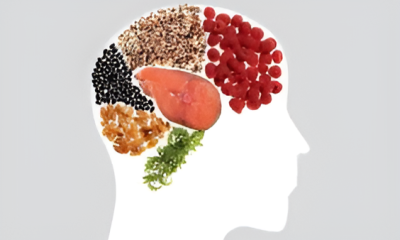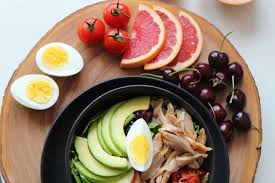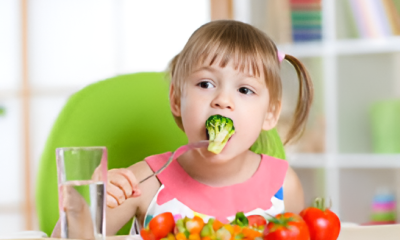Healthy food
Food to Fight Depression and Anxiety: What to Eat to Feel Better

Food not only powers your body. It can also support your mental well-being. Some foods can make you feel calmer, more balanced, and less worried. In this blog post, we will talk about the optimal foods for mental well-being and how to start using them in your life.
Why Food Affects Mental Health:
Your brain needs nutrients to function. Mood-regulating chemicals won’t operate right when there’s not enough vitamins, fats, and minerals. So, your moods can shift or be flat. Inflammation in the body influences the brain too. Happily, healthy food reduces inflammation and enhances emotional stability. Sound eating keeps you balanced and strong in the brain.
Omega-3 Foods:
Omega-3 fats are also beneficial for your brain and cut down on inflammation. It improve brain cell communication. Cold water fish like salmon, sardines, and tuna are high sources. However, if you are not a fish eater, eat chia seeds, walnuts, or flaxseeds. If you incorporate them into your diet two to three times a week, your mood will be better.
Leafy Green Vegetables:
Leafy greens are brimming with brain-fueling nutrients. Folate and magnesium, for example, help make serotonin. This stabilizes mood and suppresses nervousness. Spinach, kale, and Swiss chard are especially powerful. You can use them to spice up salads, smoothies, or soups. They may calm you down and make you more alert over time.
Whole Grains:
Whole grains give consistent energy and sustain emotional stability. They avoid blood sugar spikes and dips unlike processed grains. Oats, brown rice, quinoa, and whole wheat bread are all good choices. While your blood sugar remains consistent, your mood will be more stable, too.
Fermented Foods:
Fermented foods nourish the good bacteria in your intestines. These are responsible for an unexpected connection with mental wellbeing. They produce chemicals that influence your mood. Yogurt, kefir, kimchi, and sauerkraut are great options. For a bit of variety, have miso or kombucha. Adding these foods to your diet may help both digestion and calmness of mind.
Berries and Fruits:
Berries are antioxidant-rich. They protect your brain against inflammation and stress. Blueberries, strawberries, and blackberries are ideal choices. Bananas also contribute to mental health because they are rich in vitamin B6, a mood elevator. A mix of fruits taken daily can also elevate your mood naturally.
Nuts and Seeds:
Seeds and nuts are easy to add to snacks or meals. Nuts are rich in magnesium, zinc, and healthy fats—all linked to better mood. Select almonds, pumpkin seeds, and sunflower seeds. Add them to oatmeal or yogurt. As a bonus, they reduce stress levels in the long term.
Dark Chocolate:
Dark chocolate may be beneficial for emotional well-being. It contains flavonoids that increase blood flow to your brain. It also increases the release of endorphins—happiness chemicals in your brain. Choose chocolate that has at least 70% cocoa content for most benefit. A small amount can be soothing and also energizing.
Herbal Teas:
Herbal teas offer calming benefits without caffeine. Chamomile tea reduces anxiety. Green tea contains L-theanine, which causes relaxed focus. Peppermint tea can calm tension and aid digestion. Drinking hot tea also offers a peaceful moment in your day.
Protein-Rich Foods:
Protein helps your body produce dopamine and serotonin. These are significant chemicals that play a role in mood. Eggs, chicken, lentils, tofu, and beans are all good foods. Consume protein with every meal in order to be mentally alert and emotionally stable.
Avoid Processed Foods and Sugar:
Processed foods and sugar will mess with your mood. They cause quick energy highs followed by quick crashes. For instance, candy and soda can leave you feeling drained and irritable afterwards. Swap them out for fruits, whole grains, or protein snacks to feel better. Your brain will thank you.
Drink Enough Water:
Even mild dehydration can affect how you feel. It will exhaust you, cloud your thinking, or even make you nervous. Attempt six to eight glasses of water daily. If plain water is too dull, squeeze lemon, cucumber, or mint into it. Hydration keeps your brain at its best.
Eat Regular Meals:
Skipping meals causes low blood sugar, affecting mood and concentration. Eat every three to four hours instead. Balanced meals with protein, fiber, and healthy fats keep your brain stable. This practice allows calm energy throughout the day.
Your mealtime can do more than just fill your belly—they can pick up your mood. Omega-3s, leafy greens, fruits, and fermented foods keep your brain strong and calm. At the same time, limiting sugar and processed food will keep mood crashes at bay. Drinking water, eating frequent meals, and protein supplements will keep you emotionally stable. Start small. One good food swap per day that’s worth it can pay dividends in how you feel. Diet for mental health is also one of the simplest things to care for your mind.
Healthy food
Diet High in Protein: A Simple Guide to Weight Loss
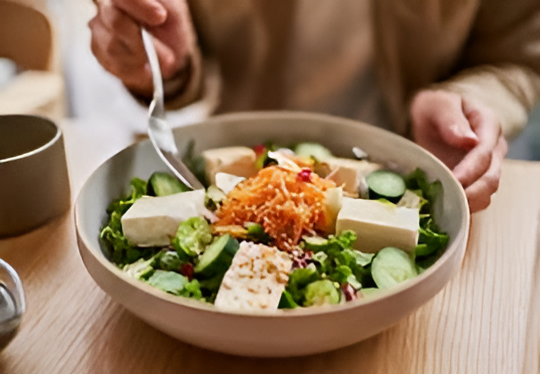
It is hard to lose weight in a wrong way. A high-protein diet helps you lose fat without losing muscle. Protein makes you feel full, ramps up your metabolism, and helps with muscle repair. The following guideline gives you reasons why a high-protein diet is excellent and effective for weight loss. You will learn how much protein to consume, the foods to employ, and helpful tips to make you a success.
Why a High Protein Weight Loss Diet?
Protein is essential in weight loss as it affects your hunger and metabolism. Your body incinerates more calories when you eat protein and digest it than if you ate fats or carbohydrates. This naturally increases your daily calorie burn. Protein also satisfies your hunger and makes you feel fuller for longer. This restricts your desire for food and stops you from overeating. In addition, when you lose weight, your body can lose muscle mass if you don’t eat plenty of protein. A protein-rich diet protects your muscles so that your metabolism stays speedy and your body stays strong. Therefore, protein is a significant contributor to healthy and effective fat loss.
How Much Protein Do You Need to Lose Weight?
How much protein you require is based on your weight and activity level. For weight loss, aim for a protein consumption of around 1.2 to 1.6 grams per kilo of body weight. When you weigh 60 kilograms, you will need around 72 to 96 grams of protein daily. This will be filling and preserve muscle on calorie restriction. If you are very active or training with weights, you may need more protein. Eat the right amount of protein to achieve maximal fat loss with minimal muscle loss.
Best High-Quality Sources of Protein to Consume
Choosing the correct proteins will get you the daily protein need in healthy manners. The body receives protein from chicken breast with minimal fat. Eggs are an affordable choice with high contents of indispensable amino acids that assist in repairing muscles. Greek yoghurt provides protein with probiotics to aid in digestion. Fish like salmon is full of protein and omega-3 fat that is healthy. Vegetarians can consume tofu and legumes as plant-based proteins. Cottage cheese is also a good low-fat and high-protein food. Protein shakes can be of help in time crunches. Consuming good amounts of these foods makes your diet balanced and flavorful.
Sample High Protein Meals for Weight Loss
High-protein meals do not necessarily have to be bland and hard to make. For breakfast, try scrambled eggs and spinach with whole wheat toast. It is filling and healthy. Greek yoghurt yoghurt with berries is sweet and healthy as a snack. Grilled chicken salad full of fresh veggies with little dressing is a healthy option for lunch. Cottage cheese with slices of cucumber to stifle hunger is another healthy snack option. Baked salmon with steamed quinoa and broccoli is a full meal for a protein-dense dinner. Such meals support weight loss by providing a steady amount of protein throughout the day.
Maximizing Weight Loss on a High-Protein Diet
Apply effective tips for maximizing a high-protein diet. Start meals by taking protein first; this will satisfy hunger for the remainder of your meal. Drink lots of water every day because staying hydrated helps to support digestion and metabolism. Pair your protein with foods high in fibre, like vegetables and whole grains, to feel fuller for longer. Steer clear of processed protein foods, like sausages or high-sugar protein bars, since they usually have questionable ingredients. Finally, include regular exercise, particularly strength training, to form muscle tissue and boost calorie burn. These recommendations reinforce one another to help you lose weight more effectively.
Most Common Myths About High Protein Diets
There are many myths regarding high protein diets, yet none of them make sense. Some people worry that consuming excessive protein harms the kidneys, but research indicates that healthy individuals are typically immune to this effect. Other individuals believe that consuming excessive protein causes them to gain weight, yet protein suppresses appetite and boosts metabolism. But eating too much protein isn’t going to burn fat by itself—you still need a calorie deficit. People with kidney problems should get medical input before eating more protein. In most cases, protein is safe and beneficial in moderation as part of a weight-reduction diet.
The Role of Protein Timing for Weight Loss
When and what you eat protein can help or hinder your weight loss experience. Spreading protein intake evenly across meals will enable your body to more effectively utilize it. Make an effort to eat 20 to 30 grams of protein at each meal to support muscle repair and fullness. Ingesting protein after exercise is especially important, as it helps in muscle recovery and fat loss. Ignoring protein or eating it all in a single sitting may reduce these benefits. Therefore, planning your protein in the same manner aids your weight loss and fitness goals.
A high-protein diet is a wonderful tool for weight loss with preserving muscular mass. It increases metabolism, reduces hunger, and helps the body in terms of strength. With lean protein options, protein intake in sufficient quantities every day, and controlled meal timing, you can achieve your fat loss goals. Remember to accompany this diet with some healthy practices such as maintaining a hydrated body and regular physical exercise. Start adding more protein to your diet from today and enjoy the benefits of a successful weight loss.
Healthy food
Kids’ Healthy Eating: Simple Habits That Build Strong Bodies
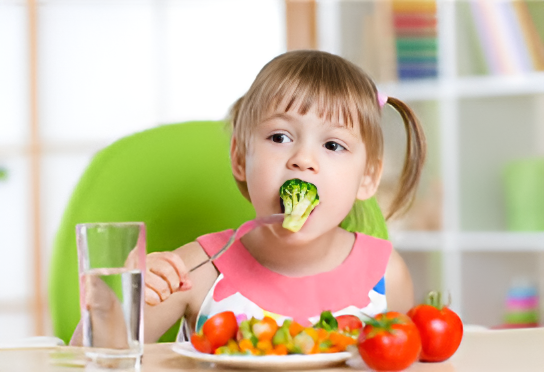
Healthy eating is important for children. It helps them become strong and full of energy every day. Well-fed kids perform better in school and play more vigorously with friends. Healthy eating is not about giving up favorite foods—it’s about making healthy choices. This article offers easy tips children can follow to eat well and feel great.
1. Eat a Colorful Plate
Kids should consume plenty of fruits and vegetables in numerous colors. Each color has a different array of vitamins that feed the body and mind. Red, orange, and green foods make kids healthy and strong. If kids look at a colored plate, then eating food is fun and exciting.
2. Don’t Skip Breakfast
Breakfast is the breakfast meal. It supplies energy for the day. Breakfast skippers tend to be tired and have difficulty concentrating. Healthy foods for breakfast are oats, fruit, and eggs. Children must have Breakfast each day before school.
3. Drink Water Instead of Sugary Beverages
Kids usually request juice or soda, but they both contain a lot of sugar. Too much sugar exhausts children and destroys their teeth. The best drink for kids is water. Water hydrates kids and helps the brain function more efficiently. Kids can put pieces of fruit into the water for added flavor.
4. Make Snacks Count
Children need snacks that are rich in energy and fundamental nutrients. Fruits, yoghurt, nuts, and whole-grain crackers are healthy snacks. Children should never consume candy and chips daily. Healthy snacks fill children up between meals and become strong and healthy.
5. Listen to Your Tummy
Children need to learn their fullness and hunger signals. Eating until satisfied and not until stuffed keeps children from overeating. It creates a healthy food relationship. It is okay if children have leftovers to take to the next meal.
6. Help with Grocery Shopping and Cooking
Kids who help with cooking and shopping for groceries feel enthusiastic about eating healthy food. By letting children pick fruits and vegetables or help prepare meals, they can learn healthy eating. In this way, kids are likely to eat healthy food.
7. Limit Treats, Don’t Ban Them
Treats like sweets and fast foods are okay now and then. Children can have treats only sometimes. Children must have healthy food most of the time to make their bodies strong and happy. This balance makes children feel happy and stop them from craving.
Healthy food helps children grow up healthy, be active, and maintain a healthy mind. Through these simple habits, children can have fun eating and take care of themselves every day. Encourage children to eat a variety of differently coloured foods, drink plenty of water, and listen to their bodies. Small steps can make a big difference in the lives of children today and tomorrow.
Healthy food
Green Veggies for Kids: Smart Ways to Make Them Eat
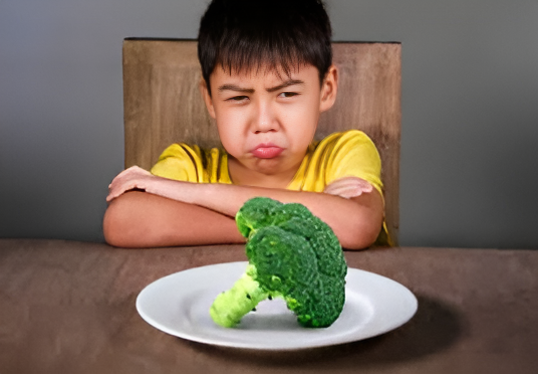
Green leafy vegetables are nutritional superstars, packed with vitamins, fiber, and minerals. To many children, however, they’re nothing more than “green stuff” to avoid. Getting children to enjoy green vegetables is a simple test most parents are familiar with. But with some creativity, patience, and fun, kids can learn to love these superfoods. In this blog, you’ll learn simple, tried-tested ways to get your child to eat—and even enjoy—green vegetables without turning dinnertime into a battle.
Start Early and Persist
The earlier you introduce leafy greens to your child, the better. Serve little portions at meal times on a consistent basis. Even if initially your child isn’t having them, never give up. Repeated exposure will cause children to become more comfortable with new foods. It can take 10 or more times before a child will try a new vegetable. Be patient and persist.
Make Greens Fun and Colorful
Presentation matters a great deal to children. Use bright plates, fun shapes, and bright combinations to make green vegetables appealing. Prepare spinach or lettuce in star or heart shapes. Mix green veggies with red peppers or corn to add color to the plate. If food is interesting to view, children are more likely to eat.
Involve Children in the Cooking Process
Engage children in cooking. They may wash lettuce, tear leaves of spinach, or blend sauces. When children help prepare meals, they are proud and engaged with what they are creating. This instills a positive connection to vegetables. Give them easy tasks and let them “own” some aspect of cooking—it will be a game-changer.
Mix Greens into Smoothies
If your child won’t even touch leafy greens on a plate, try slipping them into smoothies. Blend spinach or kale with banana, apple, or berries—the sweetness of the fruits hides the flavor of the greens. Kids get the benefits without the fight. You can even call it a “super smoothie” or “Hulk drink” to make it funnier.
Add Greens to Their Favorite Dishes
Mix leafy greens into dishes your child already likes. Sprinkle chopped spinach onto pasta sauce, rice, noodles, or omelets as a nutritious topping. Mix shredded lettuce into tacos or burgers. This keeps the flavor they’re accustomed to and adds nutrition. Gradually increase servings as they get used to it.
Use Cheese, Butter, or Light Seasoning
Leafy greens by themselves may be bitter in taste to kids. Sauté greens with butter and garlic or top with melted cheese. A little seasoning can go a long way in their taste. Just be careful not to put too much salt or fat, but don’t shy away from adding a pinch of flavor to get kids to eat them.
Be a Role Model at the Table
Kids mimic what they see. If they see you eating leafy greens and enjoying them, they will likely do the same. Discuss during eating about how it tastes or what it does for your well-being. Avoid saying something like “you have to eat this” or “it is healthy.” Just eat and be an example.
Make Leafy Greens a Habitful Snack
Greens don’t have to wait for dinner time. Offer kale chips, spinach rolls, or lettuce wraps as an after-school snack. Snacks must be diminutive and fun. If you establish a habit of healthy snacking, kids will get accustomed to the taste and texture of leafy greens but not out of obligation.
Turn It into a Game or Story
Turn greens into play or a challenge. Say to your child, “Can you gobble up the spinach before the broccoli gets jealous?” or “Let’s turn into superheroes with these greens!” You can also create stories of unique plants that give power or super strength. This engages healthy eating as part of play.
Do Not Pressure and Praise Small Steps
Forcing kids to eat greens is usually counterproductive. Rather, compliment them for even trying—just a taste. Praise with words like, “Good job trying the spinach!” or “Great that you took a bite.” Positive reinforcement works better than coercion. It makes kids feel good about trying a second time.
Keep Trying Different Greens and Ways of Cooking
All greens are not created equal. If your child won’t eat spinach, substitute with kale, arugula, or romaine. Cook them in different ways—steamed, sautéed, or baked. Some kids will only eat crunchy kale chips, not soft spinach. Just continue to try new combinations until you have a few that they will eat.
Build Healthy Habits Slowly
Taking the little ones to consume leafy greens is not a matter of overnight. But small moves can become wonderful habits. Add vegetables to the routine diet. Remain calm, have fun, and persist in trying many tricks. With time, your baby’s taste buds will evolve—and their health will too.
-

 Healthy food4 weeks ago
Healthy food4 weeks agoHealthy Vegan: Fact vs. Fiction
-

 Healthy food3 weeks ago
Healthy food3 weeks agoChia Seeds: Tiny Grains With Giant Power
-

 Mind & Soul3 weeks ago
Mind & Soul3 weeks agoThe One-Minute Calm: How Breathing Can Change Everything!
-
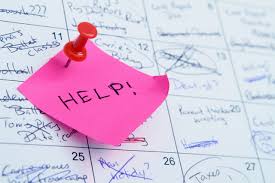
 Personal Development2 weeks ago
Personal Development2 weeks agoSchedule Overload: How to Handle a Busy Life Like a Pro
-

 Mind & Soul3 weeks ago
Mind & Soul3 weeks agoUnderstanding Anxiety: A Guide to the Different Types
-

 Mind & Soul3 weeks ago
Mind & Soul3 weeks agoDistance Isn’t the End: 10 Ways to Keep Your Love Alive
-
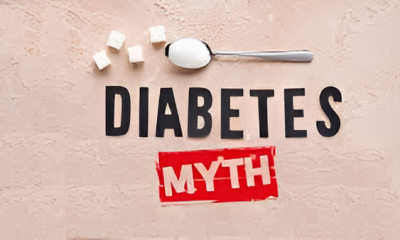
 Body and Health3 weeks ago
Body and Health3 weeks ago8 Diabetes Myths You Shouldn’t Believe
-

 Personal Development3 weeks ago
Personal Development3 weeks agoA Practical Guide to Parenting a Child with ADHD

